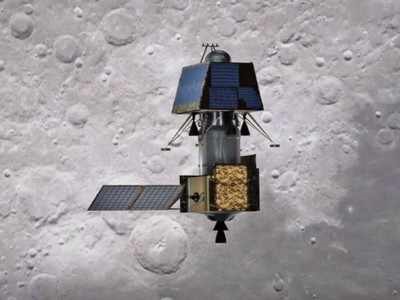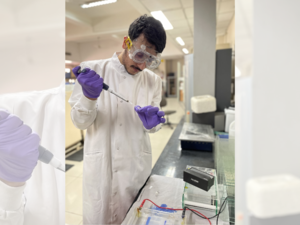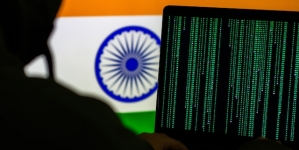-
WASHINGTON: India Now Second-Largest Source Country For New Citizens In US- Report - 12 hours ago
-
LONDON: Indian-Origin Teen In UK Gets “Life-Changing” Cancer Treatment - April 25, 2024
-
SILICON VALLEY: All About Pavan Davuluri, New Head Of Microsoft Windows - April 25, 2024
-
LONDON: UK’s India Gate To Commemorate Role Of Indian Soldiers From World Wars - April 24, 2024
-
HARARE: Shri Bramha Kumar appointed as the next Ambassador of India to the Republic of Zimbabwe - April 23, 2024
-
LONDON: Indian-Origin Principal Wins UK Legal Challenge Over School Prayer Ban - April 23, 2024
-
TORONTO: Indian-Origin Doctor Needs ₹ 2 Crore For Legal Fees. Elon Musk Responds - April 22, 2024
-
KINSHASA: India-Democratic Republic of Congo Foreign Office Consultations - April 21, 2024
-
LONDON: UK Court Allows Sale Of Nirav Modi’s Luxury London Apartment - April 21, 2024
-
TEHRAN: Travel advisory for Iran and Israel - April 20, 2024
NEW DELHI: Chandrayaan-2 orbiter finds H2O on lunar surface
NEW DELHI: Though Chandrayaan-2 mission
lander hard-landed on the lunar surface in 2019, its orbiter is doing wonders
as one of the eight key scientific instruments on board it has detected the
“unambiguous presence of hydroxyl and water molecules” on the lunar surface.
The findings will certainly give a heads-up to Isro as it is scheduled to
launch its next lander-specific lunar mission Chandrayaan-3 in 2022.
Indian researchers used the data
obtained by the orbiter’s imaging infrared spectrometer (IIRS), meant to collect
information from the Moon’s electromagnetic spectrum, to understand the lunar
mineral composition. Three strips on the Moon’s surface were analysed by an
IIRS sensor for hydration presence.
“The initial data analysis from
IIRS clearly demonstrates the presence of widespread lunar hydration and
unambiguous detection of OH and H2O signatures on the Moon between 29 degrees
north and 62 degrees north latitude,” said the findings of Indian researchers
that were recently published in Current Science journal. Plagioclase-rich rocks
have been found to have higher OH or possibly H2O molecules when compared to
mare regions, which were found to have more dominance of OH at higher surface
temperature, it said.
The study, authored by
scientists, including former Isro chairman A S Kiran Kumar, from Indian
Institute of Remote Sensing (IIRS), Dehradun, Ahmedabad-based Space
Applications Centre, Bengaluru-based U R Rao Satellite Centre and the Isro
headquarters, says the discovery is “significant for future planetary
exploration for resource utilisation”, as several international missions, both
manned and unmanned, to the Moon are lined up in the next few years.
India’s first moon mission Chandrayaan-1, launched in 2008, had first confirmed
the presence of water when an instrument on board it — Moon Mineralogy Mapper
or M3— belonging to Nasa’s JPL, first detected widely distributed hydration
signatures across the Moon using 3 µm spectral response. However, due to
limited spectral coverage of M3 (only up to 3 µm), the exact nature of the
hydration signatures could not be ascertained.
This made discrimination between
OH and H2O detection difficult, said the report. But IIRS on-board
Chandrayaan-2, which was launched on 22 July 2019, is not only indigenous but
has also been designed to measure lunar reflected and emitted solar radiation
in 0.8–5.0 µm spectral range. Its high spatial resolution (~80 m) and extended
spectral range is most suitable to completely characterise lunar hydration
(2.8–3.5 µm region) attributed to the presence of OH and H2O.
The report from the data also observed that the brighter sunlit highland
regions at higher latitudes of the Moon were found to have higher hydroxyl or
possibly water molecules, that is enhanced hydration, compared to the large
basaltic plain regions where hydroxyl appeared to be dominant, especially at
higher surface temperature.
The thermal stability of these hydration features depends upon how they
interact with one another, with the surface and their environment at particular
temperature range and therefore provides important clues about their origin and
evolution, the research paper said.
























